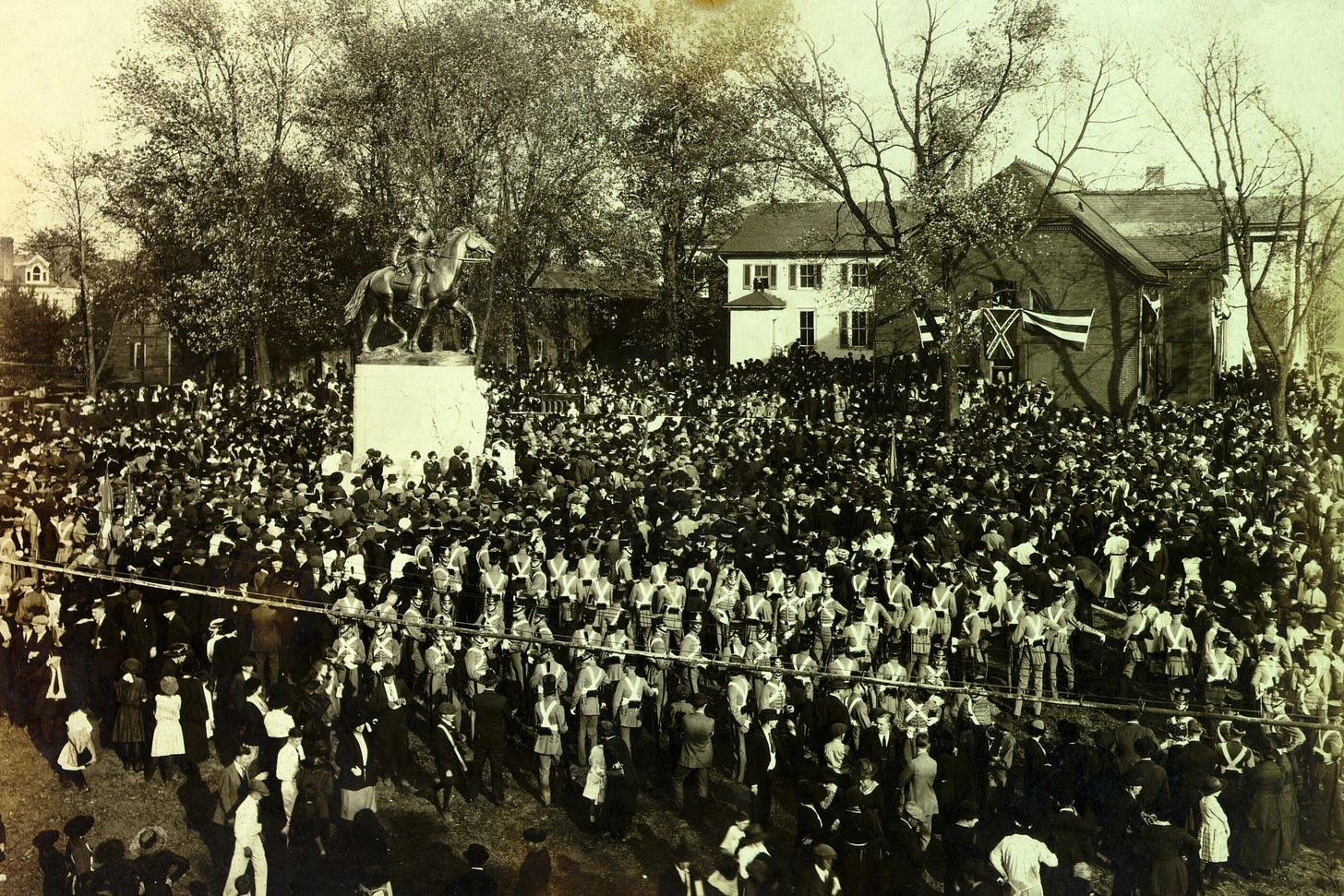One of the more popular arguments in defense of public symbols of the Confederacy is to insist that this most recent debate, going back to 2015 and increasingly since 2020, is manufactured purely to serve political ends. Implied is the claim that Confederate monuments and flags, located in public spaces, never before posed any significant problem. In short, it was a non-issue.
It is certainly the case that many of the most vocal advocates for the removal of these symbols never took notice of these public symbols before such critical moments such as the murder of nine Black churchgoers in Charleston in 2015 and the police murder of George Floyd in Minneapolis in 2020. These symbols have been targeted as part of a larger reckoning with the American past that most definitely feeds into political activism.
But this narrow view ignores the much longer history of protests against Confederate symbols, especially from within the African American community. Any understanding of this most recent protest must acknowledge this rich history of Black response to the Lost Cause and sectional reconciliation that had largely overshadowed the legacy of emancipation and the Black military service by the early twentieth century.
Donovan Schaefer, a professor of religious studies at the University of Pennyslvania, has been working on collecting primary sources from Black newspapers and other sources documenting the history of Black protest against public celebrations of the Confederacy.
Start by reading this overview of the project, published today at The Conversation. The overview details some of the more high-profile protests over the Confederate monuments on Monument Avenue in Richmond, the dedication of the Lee and Jackson statues in Charlottesville, Virginia as well as the story of Stone Mountain.
The best part, however, are the short essays by Schaefer’s students that explore individual newspaper accounts. The essays are divided between a couple useful categories, including the “faithful mammy,” flag politics, and monument locations and are ideal for classroom use. You can also explore the newspapers by state and region.
I am constantly reminded of how little understanding of the history of Confederate monuments and other public symbols of the Lost Cause there is among people on all sides of this issue. Generalizations are pervasive and outright false statements abound.
This project will certainly help to educate people about one misunderstood aspect of this complicated and controversial history.






Extremely grateful for this posting. Quite useful to me. Thanks.
Back in the early days of the Internet (1990s), there were numerous text-based Civil War discussion groups, and the ongoing efforts to take the Battle Flag off of the AL or SC capitals often came up.